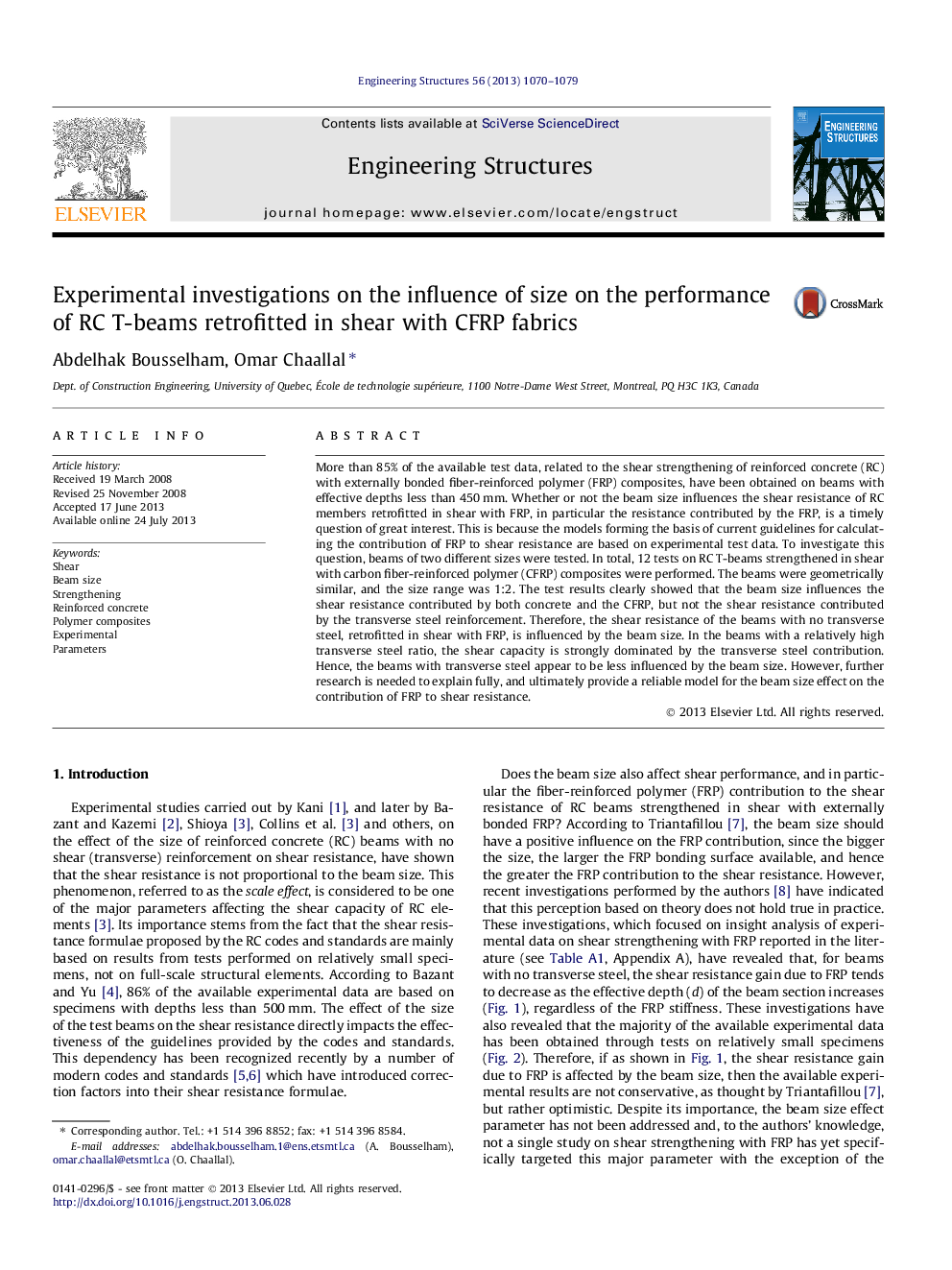| Article ID | Journal | Published Year | Pages | File Type |
|---|---|---|---|---|
| 6741479 | Engineering Structures | 2013 | 10 Pages |
Abstract
More than 85% of the available test data, related to the shear strengthening of reinforced concrete (RC) with externally bonded fiber-reinforced polymer (FRP) composites, have been obtained on beams with effective depths less than 450Â mm. Whether or not the beam size influences the shear resistance of RC members retrofitted in shear with FRP, in particular the resistance contributed by the FRP, is a timely question of great interest. This is because the models forming the basis of current guidelines for calculating the contribution of FRP to shear resistance are based on experimental test data. To investigate this question, beams of two different sizes were tested. In total, 12 tests on RC T-beams strengthened in shear with carbon fiber-reinforced polymer (CFRP) composites were performed. The beams were geometrically similar, and the size range was 1:2. The test results clearly showed that the beam size influences the shear resistance contributed by both concrete and the CFRP, but not the shear resistance contributed by the transverse steel reinforcement. Therefore, the shear resistance of the beams with no transverse steel, retrofitted in shear with FRP, is influenced by the beam size. In the beams with a relatively high transverse steel ratio, the shear capacity is strongly dominated by the transverse steel contribution. Hence, the beams with transverse steel appear to be less influenced by the beam size. However, further research is needed to explain fully, and ultimately provide a reliable model for the beam size effect on the contribution of FRP to shear resistance.
Related Topics
Physical Sciences and Engineering
Earth and Planetary Sciences
Geotechnical Engineering and Engineering Geology
Authors
Abdelhak Bousselham, Omar Chaallal,
